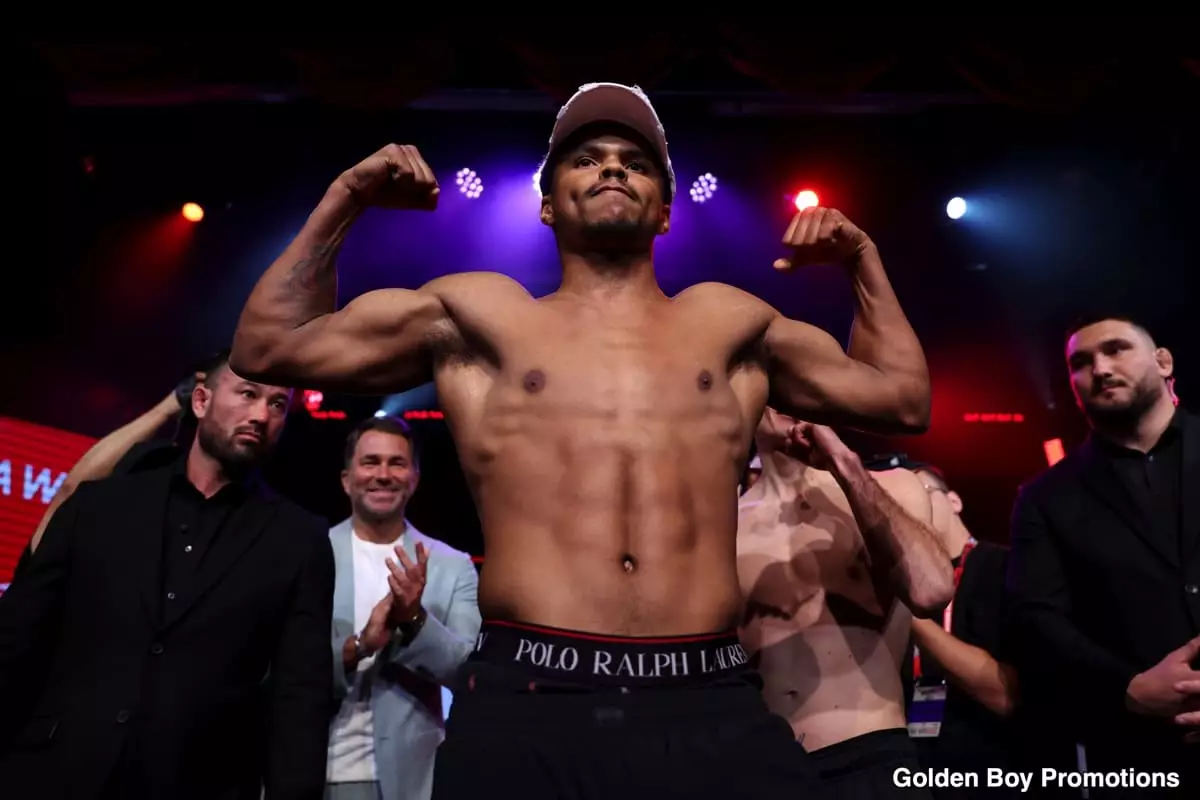Shakur Stevenson, a reigning WBC lightweight champion, finds himself under intense scrutiny from boxing legends and fans alike. The recent criticisms stem from his comments disparaging Sugar Ray Robinson, a figure widely regarded as the greatest boxer of all time. Stevenson’s comments, calling Robinson “buns” and claiming Terence Crawford would “run rings around” him, have sparked widespread controversy. Critics like Barry McGuigan argue that such remarks are not only disrespectful but also reveal a lack of understanding and respect for boxing history. While Stevenson’s desire to make a splash and showcase confidence is understandable in the sport’s highly competitive environment, dismissing icons of the past undermines his credibility and suggests a troubling attitude towards sportsmanship and humility.
What deserves more scrutiny, however, is the deeper issue of Stevenson’s fighting style and approach. Critics argue that his style is overly cautious, safety-oriented, and lacking the dynamism required to elevate him into a transcendent star. In a sport that thrives on drama, risk, and the willingness to go beyond comfort zones, Stevenson’s perceived “risk-aversion” may limit his growth and appeal. This criticism is often rooted in frustration because fans crave excitement, and boxers who only seek safe wins risk becoming forgettable. Yet, it’s essential to evaluate whether these criticisms are fair or if they reflect an unfair bias toward a fighter who may still be evolving.
The Flawed Notion of “Safety-First” and the Search for Excitement
The boxing community’s fixation on entertainment as a measure of success is both valid and problematic. While it’s undeniable that fans want thrilling, memorable moments, it is also crucial to recognize the complexity behind a boxer’s approach. Stevenson, like many seasoned professionals, prioritizes smart, strategic fighting to preserve his unbeaten record and ensure longevity. There’s a significant difference between calculated defense and outright lack of aggression. However, critics often conflate the two, accusing cautious fighters of “playing it safe.”
Stevenson’s record indicates an above-average knockout rate, but the argument remain: does he truly push himself to be great? Or is he content with avoiding risk at the expense of spectacle? These are questions Stevenson needs to confront. The sport’s history has shown that fighters who combine technical mastery with relentless aggression often leave a lasting legacy. Sugar Ray Robinson, Sugar Ray Leonard, Roberto Duran—these legends didn’t shy away from danger. Stevenson’s challenge lies in balancing smart boxing with the undeniable need to thrill audiences—to show that he’s not just a tactician but a fighter driven by passion and purpose.
Historical Reverence and the Pitfalls of Complacency
Critics like Barry McGuigan emphasize the importance of humility, especially when discussing boxing’s icons. There’s a cultural and moral obligation for current champions to honor those who built the sport’s foundation. Dismissing Robinson’s greatness as “buns” not only diminishes Robinson’s legendary status but also reflects a disconnect from the sport’s rich history. Stevenson, as a young boxer, would do well to recognize the importance of humility and perspective.
Too many fighters, in their quest for fame and recognition, drift into arrogance or ignorance about their sport’s heritage. Sterling fighters understand that their success is built on the shoulders of giants. If Stevenson truly aspires to greatness, he must learn to appreciate the legends who came before him and avoid inflammatory comments that only serve to alienate him from fans and peers alike. Respect breeds credibility, and credibility can turn a good fighter into an unforgettable champion.
What It Takes for Stevenson to Truly Elevate His Game
Ultimately, true greatness is achieved not by dismissing history or calling for quick thrills but by demonstrating resilience, adaptation, and character. Stevenson has the tools—speed, skill, and youth. But these are not enough. To transcend the narrow confines of his current reputation, he must take meaningful risks, display true grit, and craft fights that will define his era. Achieving this requires a mindset that embraces challenge, not dodges it; that seeks growth, not just the easiest path.
The question remains: can Stevenson shed the safety-first label? Will he rise to the occasion when the moment demands more than strategic safety? If he can do this, coupled with a greater appreciation of boxing’s storied past, he might turn his reputation around and redefine what it means to be a modern champion. For now, his journey is only beginning, and the crucible of fierce competition—the upcoming fight against William Zepeda—may be the catalyst he needs to shake off critics and step into the true spotlight of boxing legacy.

